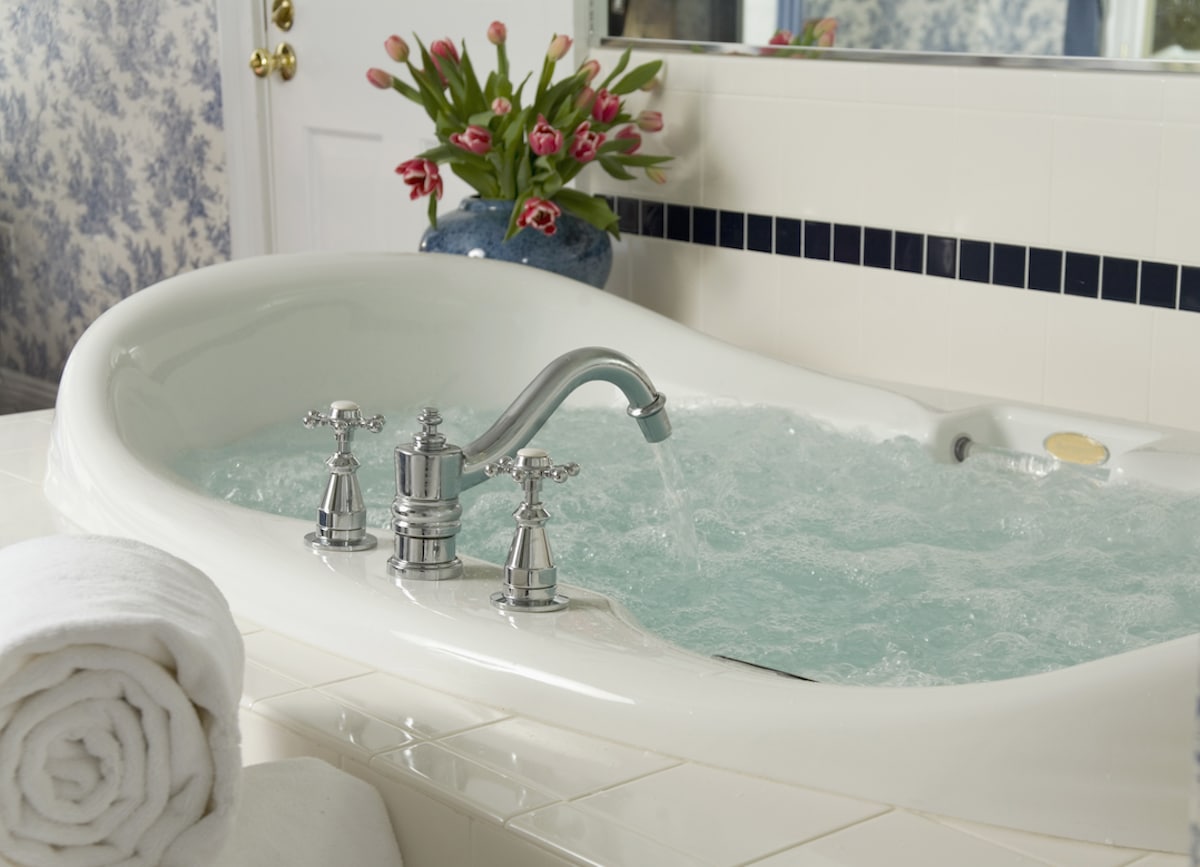

We use a lot of water: to flush our toilets, cook our food, fill our bathtubs, water our plants, wash our clothes, and brush our teeth. An average family of four in the U.S. uses about 400 gallons of water each day, according to the U.S. Environmental Protection Agency, and about 120 of those gallons are wasted. but a lot of the water we use can be repurposed. Reusing water is especially important as climate change raises temperatures and diminishes available water supply. And that’s where greywater comes in.
Greywater is the lightly used water from showers, bathtubs, sinks, and washing machines in the home that often just spirals down the drain, flowing into sewers. While this water is a pollutant when released into natural water bodies, it is a beneficial source of water and nutrients for garden and household plants alike, and can be repurposed in many ways. Greywater can be safely used if it contains traces of grease, hair, dirt, food, and some cleaning products, but not if it contains feces, so all water from toilets or from washing diapers – called “blackwater” – is off-limits.
Benefits of Greywater
Reusing greywater – whether through a simple, DIY mechanism or a professional system installed in your home – can reduce water waste by up to 40%. As droughts become more pervasive due to climate change – like the megadrought in the U.S. West that scientists estimate is 42% more extreme due to climate change – many regions are implementing strict limits on water use, including Los Angeles, Ventura, and San Bernardino counties in California, where millions of people will be impacted by new orders next month that limit outdoor water use to only one day a week. Greywater systems make water available for outdoor use even in the face of such restrictions, insuring that your gardens and indoor plants won’t become casualties of water shortage. Greywater systems also save money: if you’re reducing your water use by 40%, you’re also slashing your water bill by the same amount.
How to Use Greywater
Greywater is primarily used to water ornamental plants like trees, shrubs, flowers, and native grasses, but can also be used to water vegetable plants and other garden edibles as long as the water touches only the soil and does not come into contact with the edible part of the plant that will be harvested. When watering plants, make sure to use water that doesn’t contain products harmful to the soil, like bleach or high amounts of salt.
If gardening isn’t your forte, use water without grease – like wastewater from laundry machines – to wash the car. Collected greywater can also be used to “bucket flush” toilets instead of using clean water, which serves little purpose for flushing our waste.
Installing Greywater Systems
Professional greywater systems are often expensive to install, but simple DIY systems can be very functional and produce comparable savings. Greywater Action is a group of educators dedicated to developing new codes and incentives to reduce water use in communities by utilizing greywater, and who develop and share designs for low-tech, affordable greywater systems for residential use. They also offer online workshops and courses about installing these systems yourself – take one to find out which at-home system is best for you, given the construction of your home, your personal water usage, and your budget.
Greywater Action has many designs for greywater systems that require minimal materials and maintenance, including a simple solution for repurposing spent water from laundry machines. Since you won’t necessarily need all of the used laundry water for your plants, installing a diverter valve is a good way to switch between the greywater and sewer/septic systems. Connect the machine’s discharge hose (from which the water is pumped out) and attach it to the diverter valve. On the greywater side, use a hose to direct the water flow into a large plastic drum, then insert a spigot or hose into the bottom to dispense the water for yard use – or, use the valve to divert water directly to an irrigation system in the yard.
More elaborate, professional systems can reconfigure household plumbing to reroute water from all applicable sources, but can cost up to $10,000. While more expensive, these systems can save between 10,000 and 50,000 gallons of drinking water each year – savings which are especially important in regions like California facing unprecedented drought. Greywater Action has a directory of companies and individuals who have completed training and can professionally install greywater systems. Find a trained professional to help build a system that works for you, or look into other local services.
Reusing Greywater Without a System
Even without an established system, you can reuse greywater every day! Collect water by placing buckets in the shower while the water is warming up, or nest a bowl underneath a colander when washing produce or draining pasta. Save the water from steaming vegetables or whatever is leftover in dog/cat water bowls. Even leftover coffee can be used to water acidity-loving plants, like begonias and azaleas.
Basic Guidelines and Safety Concerns
- Make sure you know all code and permit requirements for your area. Some states don’t have greywater codes, so you’ll need a permit to install a system, and others only allow certain uses of the water.
- Minimize human and pet contact with the greywater. Allowing it to completely infiltrate into the ground without pooling on the surface will help prevent potential contact.
- Use greywater within 24 hours. Don’t store the water for longer than a day, as odors will develop as the nutrients in the water begin to break down.
- Greywater shouldn’t be used to water turf grass, and regulations often prohibit the use of greywater in sprinklers. Consider replacing turf grass with native plants and piping greywater to water them instead.

 233k
233k  41k
41k  Subscribe
Subscribe 